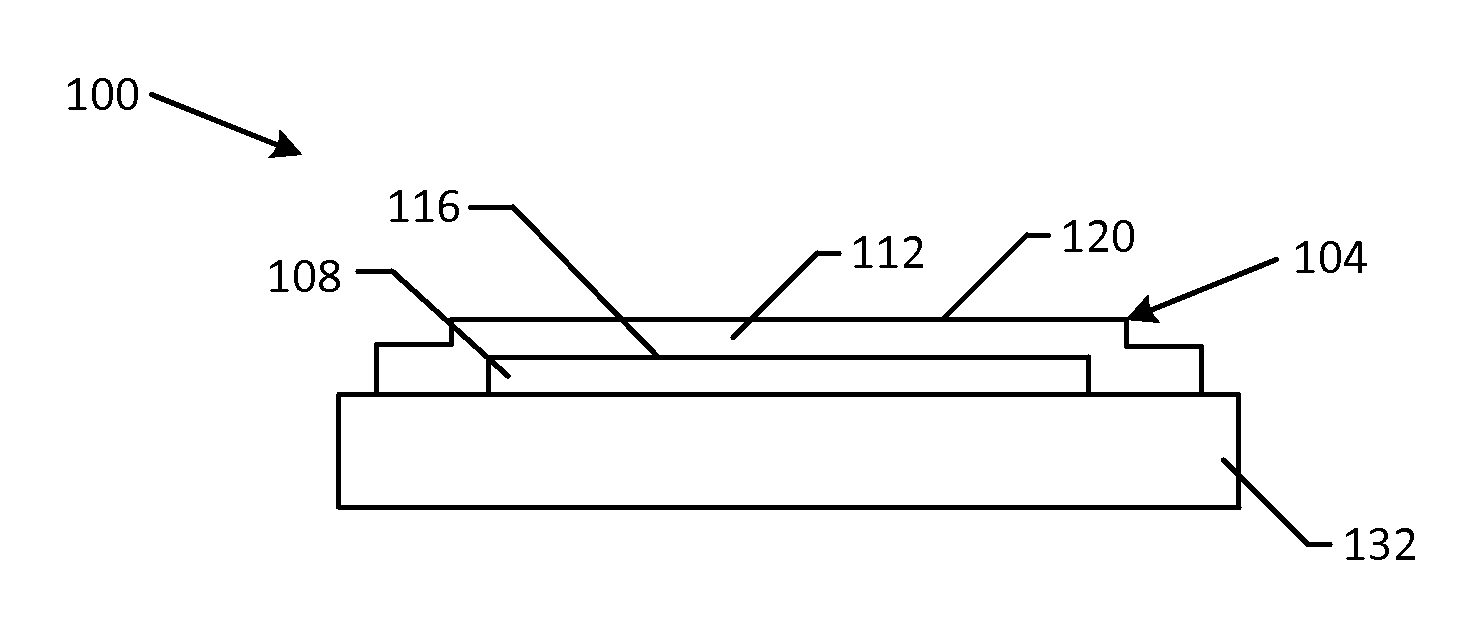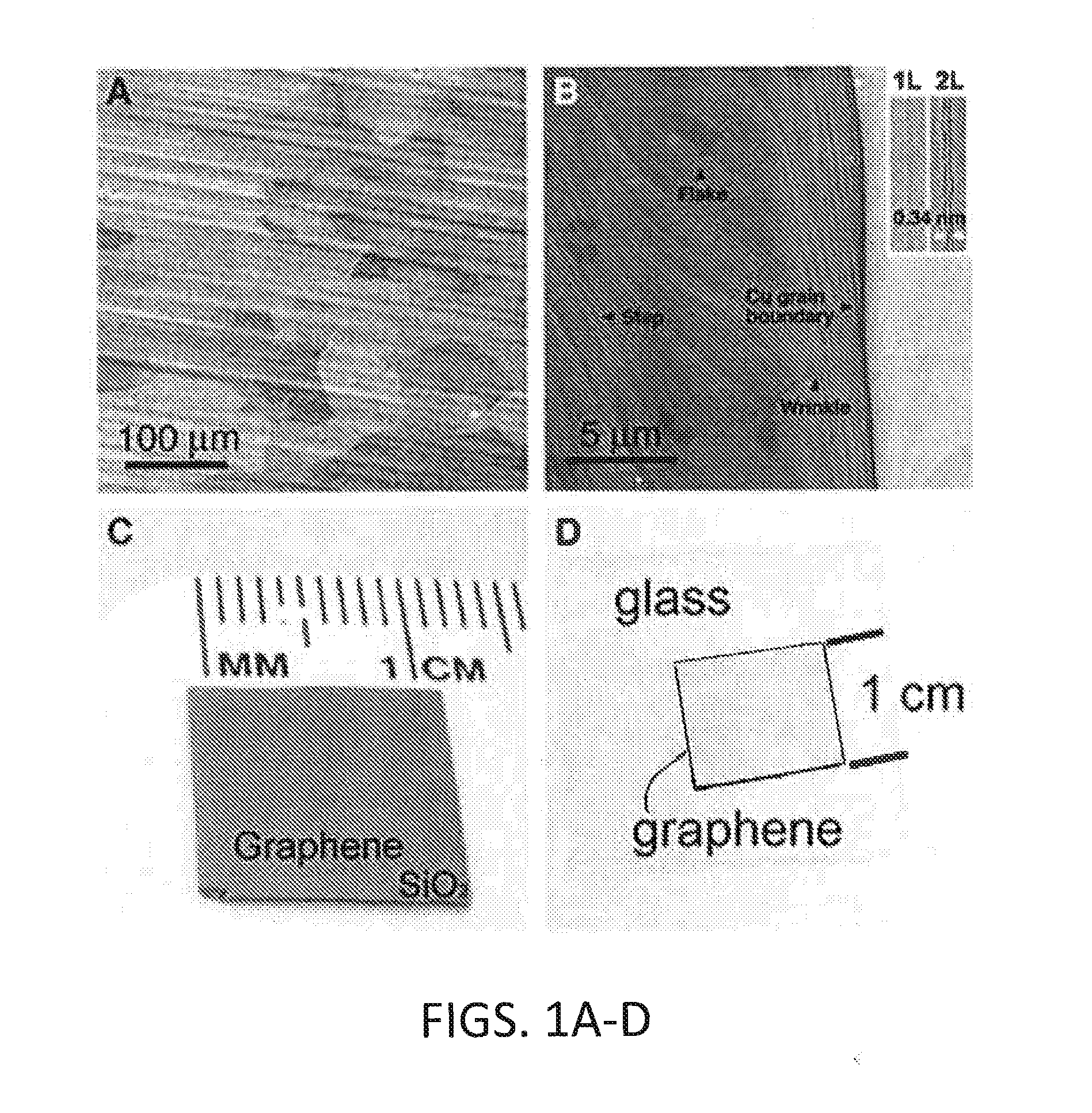Graphene Shield Enhanced Photocathodes and Methods for Making the Same
a technology of enhanced photocathodes and graphene shields, which is applied in the direction of photoelectric discharge tubes, electrical equipment, electrical discharge tubes, etc., can solve the problems of inability to rapidly gate for use in high frequency applications, the cathode is relatively rugged and exhibits relatively long lifetime, and the thermionic cathode cannot serve as photogated emitters in any commercially practical manner, etc., to achieve the effect of reducing work functions, reducing work functions
- Summary
- Abstract
- Description
- Claims
- Application Information
AI Technical Summary
Benefits of technology
Problems solved by technology
Method used
Image
Examples
Embodiment Construction
[0023]As a person skilled in the art will recognize from the following detailed description and from the figures and claims, modifications and changes can be made to the preferred embodiments of the invention without departing from the scope of this invention defined in the following claims.
[0024]A photocathode is a cathode that emits electrons when exposed to radiant energy and especially light. Photocathodes include photosensitive films that, when struck by a quantum of light (photons), the absorbed energy causes electron emission due to the photoelectric effect. In general, photocathodes are characterized by: the photoemission threshold, which defines the wavelength range of a laser (IR, visible, UV); the quantum efficiency (QE) (the ratio of the emitted electrons over the incident photons), which sets a requirement on the power of a device such as a laser; the lifetime, which defines the working time (as defined either by total integrated emitted charge or total time of producti...
PUM
 Login to View More
Login to View More Abstract
Description
Claims
Application Information
 Login to View More
Login to View More - R&D
- Intellectual Property
- Life Sciences
- Materials
- Tech Scout
- Unparalleled Data Quality
- Higher Quality Content
- 60% Fewer Hallucinations
Browse by: Latest US Patents, China's latest patents, Technical Efficacy Thesaurus, Application Domain, Technology Topic, Popular Technical Reports.
© 2025 PatSnap. All rights reserved.Legal|Privacy policy|Modern Slavery Act Transparency Statement|Sitemap|About US| Contact US: help@patsnap.com



